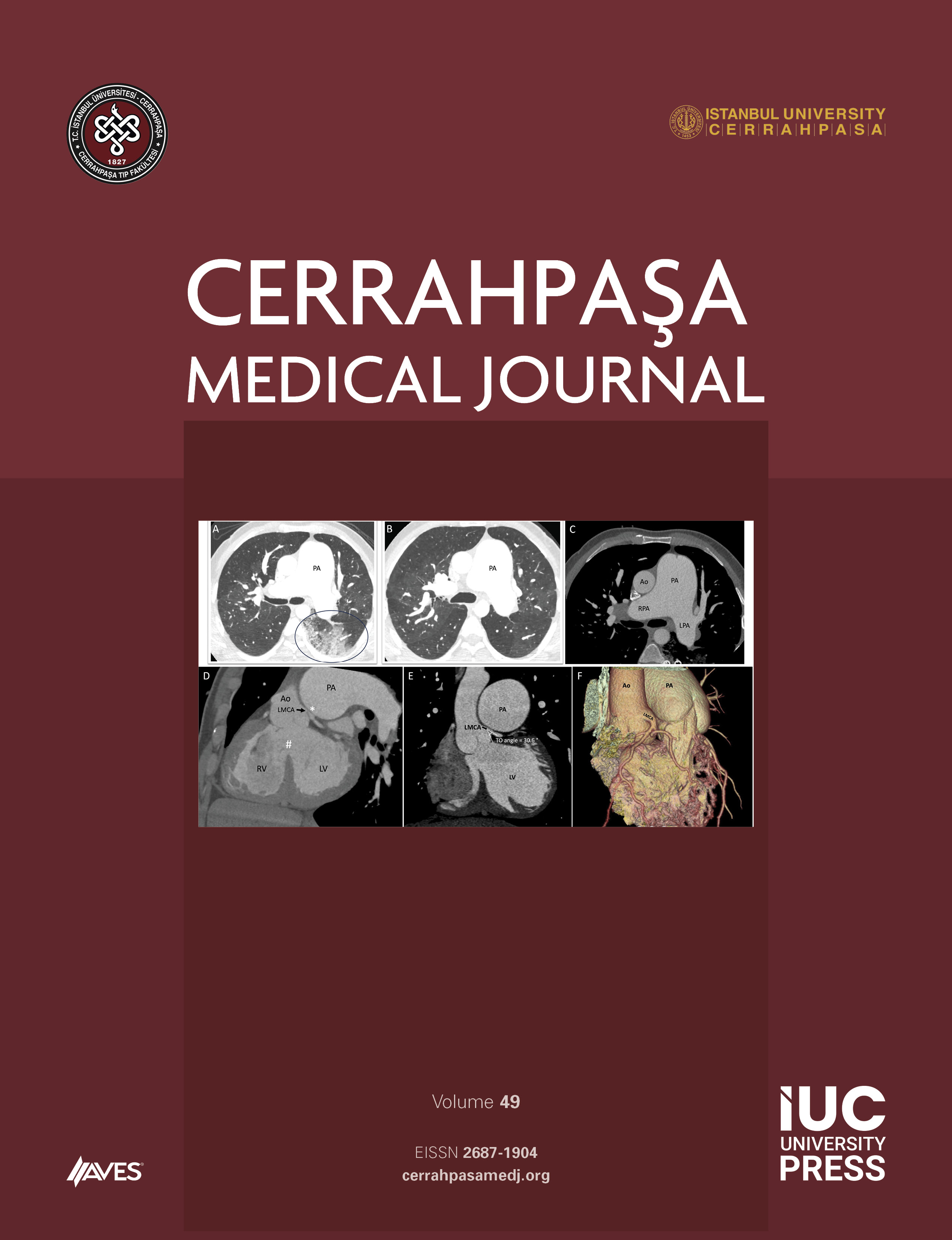Objective: Brain death (BD) implies the permanent absence of cerebral and brainstem functions. It should be shown that there is no blood flow in all brain regions even besides the brainstem by using the confirmatory tests. We aimed to evaluate the incompatibility to diagnosis of BD by clinical and ancillary tests (computed tomographic angiography (CTA), magnetic resonance imaging angiography (MRIA), transcranial Doppler ultrasonography (TCD-USG), electroencephalography (EEG)).
Methods: The patients admitted to our intensive care unit between 2012-2018 have been evaluated retrospectively. Twenty two patients who were assessed as BD, and additionally 12 of them had ancillary tests for BD for certain diagnosis investigated. Demographic data, causes of BD, and the follow ups were recorded for all patients.
Results: Twelve patients were diagnosed as BD. The reasons leading to BD were intracranial hemorrhage, cardiac arrest, intracranial tumours, pulmonary embolism, aneurysmal hemorrhage, menengitis, subarachnoid hemorrhage. The mean age was 40.86±15.62 years, the mean APACHE II score was 28.23±16.33. Brain death was diagnosed by clinically in 10 patients, and 12 patients evaluated by ancillary tests.
Conclusion: Brain death can be diagnosed based on clinical criteria, but in somehow confirmative tests may be necessary. Clinically diagnosing of BD is not always consistent with CTA, and procedure is needed to be repeated or other further techniques have to be used for confirmation.
Cite this article as: Utku T, Bozbay S, Ürkmez S, Akçıl EF, Demirkıran O, Dikmen Y. Assessing the consistency of clinical diagnosis and ancillary tests for brain death. Cerrahpasa Med J 2019; 43(1): 29-33.



